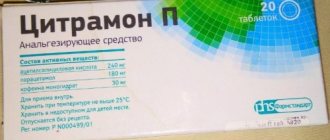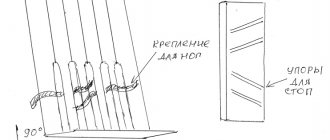Write a review
Reviews: 0
Manufacturers: Patheon Italia (Italy)
Active ingredients
- Olanzapine
Disease class
- Schizophrenia
- Chronic delusional disorders
- Schizoaffective disorders
Clinical and pharmacological group
- Not indicated. See instructions
Pharmacological action
- Antipsychotic
Pharmacological group
- Neuroleptics
Lyophilisate for the preparation of solution for injection Zyprexa (Zyprexa)
Instructions for medical use of the drug
Description of pharmacological action
Being a ligand of serotonin (2A/2C, 3, 6), dopamine (D1-D5), m-cholino- (m1-m5), histamine H1- and alpha1-adrenergic receptors, it selectively affects the limbic system.
Indications for use
An acute form of schizophrenia and other psychoses, accompanied by pronounced positive (delusions, hallucinations, thought disorders, hostility, suspicion) and/or negative (blunted affect, emotional and social isolation, poor speech activity) symptoms. Secondary affective symptoms due to schizophrenia and related disorders.
Release form
lyophilisate for preparing a solution for intramuscular administration 10 mg; bottle (bottle) 5 ml, cardboard pack 1;
Pharmacodynamics
An antipsychotic drug (neuroleptic) with a wide pharmacological spectrum of influence on a number of receptor systems. Preclinical studies have established the affinity of olanzapine for serotonin 5HT2A/C-, 5HT3-, 5HT6 receptors, dopamine D1-, D2-, D3-, D4-, D5 receptors, muscarinic m1-5 cholinergic receptors, adrenergic α1 receptors and histamine H1 receptors. Experimental studies have revealed the presence of olanzapine antagonism towards serotonin 5HT receptors, dopamine and cholinergic receptors. In vivo and in vitro, olanzapine has greater affinity and activity for serotonin 5HT2 receptors compared to dopamine D2 receptors. According to electrophysiological studies, olanzapine selectively reduces the excitability of mesolimbic dopaminergic neurons and at the same time has a slight effect on striatal nerve pathways involved in the regulation of motor functions. Olanzapine reduces the conditioned defense response (a test that characterizes antipsychotic activity) at doses lower than doses that cause catalepsy (a disorder reflecting side effects on motor function). Unlike other antipsychotics (neuroleptics), olanzapine enhances the anti-anxiety effect during the anxiolytic test. Two placebo-controlled and two of three comparative controlled studies involving 2900 patients with schizophrenia showed that olanzapine provides a statistically significant reduction in both productive (including delusions, hallucinations) and negative disorders.
Pharmacokinetics
Absorption After oral administration, olanzapine is well absorbed from the gastrointestinal tract, Cmax in plasma is reached after 5-8 hours. Plasma concentrations of olanzapine have a linear dependence on the dose (ranging from 1 to 20 mg). Eating does not affect the absorption of olanzapine. Distribution At plasma concentrations from 7 to 1000 ng/ml, binding to plasma proteins, mainly albumin and α1-acid glycoprotein, is about 93%. Metabolism Olanzapine is metabolized in the liver by conjugation and oxidation. The main circulating metabolite is 10-N-glucuronide, which theoretically does not cross the BBB. Cytochrome P450 isoenzymes CYP1A2 and CYP2D6 are involved in the formation of N-desmethyl and 2-hydroxymethyl metabolites of olanzapine. Experimental studies in animals have shown that these metabolites have significantly less pronounced pharmacological activity in vivo than olanzapine. The main pharmacological activity of the drug is due to the parent substance - olanzapine. The activity of the cytochrome P450 isoenzyme CYP2D6 does not affect the level of metabolism of olanzapine. Elimination: In healthy volunteers, after oral administration, T1/2 of olanzapine is 33 hours (21 - 54 hours for 5-95%), and the average plasma clearance is 26 l/h (12 - 47 l/h for 5-95%). About 57% of radiolabeled olanzapine is excreted in the urine, mainly in the form of metabolites. Pharmacokinetics in special clinical situations The pharmacokinetic parameters of olanzapine vary depending on gender, age, and the presence of smoking addiction: Characteristics of patients T1/2 (h) Plasma clearance (l/h) Non-smokers 38.6 18.6 Smokers 30.4 27.7 Women 36.7 18.9 Men 32.3 27.3 Elderly (65 years and older) 51.8 17.5 Under 65 years 33.8 18.2 However, the degree of changes in T1/2 and clearance under the influence of each of these factors is significantly inferior to the degree of individual differences in these indicators. There were no significant differences between the mean values of T1/2 and olanzapine clearance in patients with severely impaired renal function compared with individuals with normal renal function. In smoking patients with minor hepatic impairment, the clearance of olanzapine is lower than in non-smokers without such impairment. In a study involving subjects of European, Japanese and Chinese descent, there were no differences in the pharmacokinetics of olanzapine associated with race.
Use during pregnancy
During pregnancy - with caution, comparing the expected benefits for the mother and the potential risk for the fetus. FDA category of effect on the fetus is C. Breastfeeding should be discontinued during treatment.
Contraindications for use
Hypersensitivity, breastfeeding.
Side effects
From the nervous system and sensory organs: dizziness, headache, migraine, weakness, asthenia, drowsiness, insomnia, anxiety, hostility, agitation, euphoria, amnesia, depersonalization, phobia, obsessive-compulsive symptoms, neuralgia, facial nerve paresis, hypoesthesia, extrapyramidal disorders, incl. tardive dyskinesia, ataxia, stiff neck, muscle twitching, tremor, akathisia, dysarthria, stuttering, syncope, delirium, suicidal tendencies, stupor, coma, subarachnoid hemorrhage, stroke, nystagmus, diplopia, mydriasis, pigment deposition in the lens, cataract, xerophthalmia, hemorrhages in the eye, accommodation disturbance, amblyopia, glaucoma, corneal damage, eye pain, keratoconjunctivitis, blepharitis, noise and pain in the ears, deafness, impaired taste. From the cardiovascular system and blood (hematopoiesis, hemostasis): orthostatic hypotension, tachy- and bradycardia, palpitations, ventricular extrasystole, ECG changes, cardiac arrest, cyanosis, vasodilation, transient leuko- and neutropenia, eosinophilia, leukocytosis, thrombocytopenia, hemorrhagic syndrome. From the respiratory system: rhinitis, pharyngitis, laryngitis, change in voice, increased cough, dyspnea, apnea, bronchial asthma, hyperventilation. From the gastrointestinal tract: increased appetite up to bulimia, thirst, dry mouth, increased salivation, aphthous stomatitis, gingivitis, glossitis, dysphagia, belching, esophagitis, nausea, vomiting, gastritis, gastroenteritis, enteritis, melena, rectal bleeding, constipation, flatulence, fecal incontinence, transient increase in the activity of liver transaminases, gamma-glutamyl transpeptidase and creatine phosphokinase, hepatitis. From the metabolic side: hyperprolactinemia, increase (rarely decrease) in body weight, diabetes mellitus, hyperglycemia, diabetic ketoacidosis, diabetic coma, goiter. From the genitourinary system: dysuria (including polyuria), hematuria, pyuria, albuminuria, urinary incontinence, urinary tract infections, cystitis, decreased libido, impotence, ejaculation disorders, priapism, gynecomastia, galactorrhea, breast pain, fibrosis uterus, premenstrual syndrome, menopause and metrorrhagia, amenorrhea. From the musculoskeletal system: arthritis, arthralgia, bursitis, myasthenia gravis, myopathy, calf muscle cramps, bone pain. From the skin: photosensitivity, alopecia, hirsutism, dry skin, eczema, seborrhea, contact dermatitis, ulcerative skin lesions, skin discoloration, maculopapular rash. Allergic reactions: urticaria. Other: fever, chills, flu-like syndrome, lymphadenopathy, chest or abdominal pain, peripheral edema, withdrawal syndrome, abuse possible.
Directions for use and doses
For schizophrenia and similar psychotic disorders, the recommended initial dose of the drug is 10 mg 1 time / Zyprexa can be taken regardless of meals. Therapeutic doses range from 5-20 mg/day. The daily dose must be selected individually depending on the clinical condition of the patient. Increasing the dose above the standard dose of 10 mg/day is recommended only after appropriate clinical examination of the patient. For acute mania in bipolar disorder, the recommended initial dose of the drug is 15 mg 1 time. Therapeutic doses of olanzapine range from 5-20 mg. The daily dose must be selected individually depending on the clinical condition of the patient. Increasing the dose above the standard dose of 15 mg/day is recommended only after appropriate clinical examination of the patient. The dose should be increased gradually, at intervals of at least 24 hours. For elderly patients, as well as for severe renal failure or moderate liver failure, the drug is prescribed at an initial dose of 5 mg/ A reduction in the initial dose is recommended for patients with a combination of factors (female patients , old age, non-smokers), which may slow down the metabolism of olanzapine.
Overdose
Symptoms: very often (≥10%) - tachycardia, agitation/aggression, articulation disorder, various extrapyramidal disorders and disturbances of consciousness of varying severity (from sedation to coma). Other clinically significant effects of olanzapine overdose included delirium, seizures, neuroleptic malignant syndrome, respiratory depression, aspiration, hypertension or hypotension, cardiac arrhythmias (Treatment: There is no specific antidote for olanzapine. Artificial induction of vomiting is not recommended. Standard detoxification techniques are indicated (i.e. e. gastric lavage, intake of activated charcoal). Simultaneous intake of activated charcoal reduces the bioavailability of olanzapine when taken orally by 50-60%. Symptomatic treatment is indicated in accordance with the clinical condition and monitoring of the functions of vital organs, including treatment of arterial hypotension, vascular collapse and support respiratory function.Epinephrine, dopamine and other sympathomimetics, which are β-adrenergic receptor agonists, should not be used, since stimulation of the latter can aggravate arterial hypotension.
Interactions with other drugs
The metabolism of olanzapine may be altered by inhibitors or inducers of cytochrome P450 isoenzymes that exhibit specific activity against CYP1A2. The clearance of olanzapine increases in smoking patients and in patients taking carbamazepine (due to increased CYP1A2 activity). Known potential inhibitors of CYP1A2 may reduce the clearance of olanzapine. Olanzapine is not a potential inhibitor of CYP1A2 activity, therefore the pharmacokinetics of drugs such as theophylline, which are metabolized primarily by CYP1A2, are not altered when taking olanzapine. Clinical trials have shown that a single dose of olanzapine during therapy with the following drugs: imipramine or its metabolite desipramine (CYP2D6, CYP3A4, CYP1A2), warfarin (CYP2C19), theophylline (CYP1A2) or diazepam (CYP3A4, CYP2C19) was not accompanied by their suppression metabolism. There were also no signs of drug interactions when olanzapine was used in combination with lithium or biperiden. Against the background of steady-state concentrations of olanzapine, no changes in the pharmacokinetics of ethanol were observed. However, taking ethanol with olanzapine may be accompanied by increased pharmacological effects of olanzapine, such as sedation. A single dose of an aluminum- and magnesium-containing antacid or cimetidine does not affect the bioavailability of olanzapine when taken orally. Simultaneous administration of activated carbon reduces the bioavailability of olanzapine by 50-60%. Fluoxetine (60 mg once or 60 mg daily for 8 days) causes an average 16% increase in olanzapine Cmax and an average 16% decrease in olanzapine clearance. The degree of influence of fluoxetine is significantly lower than the severity of individual differences in these indicators, therefore it is usually not recommended to change the dose of olanzapine when prescribed in combination with fluoxetine. In vitro studies using human liver microsomes have shown that olanzapine slightly inhibits the formation of valproate glucuronide (the main pathway of valproate metabolism). Valproate also has little effect on the metabolism of olanzapine in vitro. Therefore, a clinically significant pharmacokinetic interaction between olanzapine and valproate is unlikely. Based on in vitro studies using human liver microsomes, olanzapine has very little potential to inhibit the activity of the following cytochrome P450 isoenzymes: CYP1A2, CYP2C9, CYP2C19, CYP2D6 and CYP3A4.
Precautions for use
When there are a combination of factors that slow down the metabolism of olanzapine (female patients, elderly patients, non-smokers), it should be used in a reduced dosage. Careful monitoring of patients with suicidal tendencies is required, especially at the beginning of treatment. During treatment, liver transaminase activity should be regularly monitored, especially in patients with impaired liver function. Prescribe with caution to vehicle drivers and people whose activities require increased concentration and speed of psychomotor reactions. During the treatment period, alcohol intake is excluded. If symptoms of neuroleptic malignant syndrome appear (fever, muscle tension, akinesia, tachycardia, leukocytosis, increased creatine phosphokinase), immediate discontinuation of the drug is necessary. Considering the possibility of developing akathisia, if motor restlessness, restlessness, and a constant desire to move appear during treatment, it is necessary to reduce the dose and prescribe antiparkinsonian drugs.
Special instructions for use
When using any antipsychotics, including olanzapine, the development of neuroleptic malignant syndrome, a potentially fatal symptom complex, is possible. Clinical manifestations of this syndrome include a significant increase in body temperature, muscle rigidity, changes in mental status and autonomic disorders (unstable pulse or blood pressure, tachycardia, cardiac arrhythmia, increased sweating). Additional features may include increased CPK levels, myoglobinuria (rhabdomyolysis), and acute renal failure. Clinical manifestations of neuroleptic malignant syndrome or a significant increase in body temperature without other symptoms of this syndrome require discontinuation of all antipsychotics, including olanzapine. In comparative studies lasting more than 6 weeks, treatment with olanzapine was significantly less likely to be accompanied by the development of dyskinesia requiring drug correction than the use of haloperidol. However, the risk of tardive dyskinesia should be taken into account during long-term therapy with antipsychotics. If signs of tardive dyskinesia develop, it is recommended to reduce the dose or discontinue olanzapine. Symptoms of tardive dyskinesia may increase or manifest after discontinuation of the drug. The drug should be used with extreme caution when the activity of AST and ALT increases in patients with insufficiency of liver function, limited functional reserve of the liver, or in patients receiving treatment with potentially hepatotoxic drugs. If the activity of AST and/or ALT increases during treatment with olanzapine, careful monitoring of the patient is required and, if necessary, a dose reduction. Olanzapine should be used with caution in patients with a history of epileptic seizures or exposed to factors that lower the seizure threshold. In such patients, seizures were rarely observed during olanzapine treatment. The drug should be prescribed with caution to patients with a low number of leukocytes and/or neutrophils due to various reasons; with signs of suppression/toxic impairment of bone marrow function under the influence of drugs in the anamnesis; with suppression of bone marrow function due to concomitant disease, radiotherapy or chemotherapy in history; with hypereosinophilia or myeloproliferative disease. In clinical studies, the use of olanzapine in patients with a history of clozapine-dependent neutropenia or agranulocytosis was not accompanied by relapses of these disorders. In clinical studies, olanzapine therapy was rarely accompanied by side effects associated with the anticholinergic activity of the drug. However, clinical experience with olanzapine in patients with concomitant diseases is limited, so caution is recommended when prescribing olanzapine to patients with clinically significant prostatic hypertrophy, paralytic ileus, angle-closure glaucoma and similar conditions. In vitro, olanzapine exhibits dopamine antagonism and, like other antipsychotics, may theoretically inhibit the effects of levodopa and dopamine agonists. Given the nature of the drug's action on the central nervous system, olanzapine should be used with caution in combination with other centrally acting drugs and ethanol. Use in Pediatrics The safety and effectiveness of olanzapine in patients under 18 years of age have not been studied. Effects on the ability to drive and use machines Patients taking olanzapine should be careful when operating mechanical vehicles, including a car, as olanzapine may cause drowsiness.
Storage conditions
List B.: In a dark place, at a temperature of 15–30 °C. Do not freeze.
Best before date
36 months
ATX classification:
N Nervous system
N05 Psycholeptics
N05A Antipsychotic drugs
N05AH Derivatives of diazepine, thiazepine and oxazepine
N05AH03 Olanzapine
Zyprexa
Antipsychotic (neuroleptic). Has affinity for serotonin 5-HT2A/C-, 5-HT3-, 5-HT6 receptors; dopamine D1-, D2-, D3-, D4-, D5 receptors; M1-5 cholinergic receptors; α1-adrenergic receptors and histamine H1 receptors. Shows antagonism towards serotonin 5-HT, dopamine and cholinergic receptors.
Under in vitro and in vivo conditions, it has a more pronounced affinity and activity for serotonin 5-HT2 receptors compared to dopamine D2 receptors. According to electrophysiological studies, olanzapine selectively reduces the excitability of mesolimbic (A10) dopaminergic neurons and, at the same time, has a slight effect on striatal (A9) nerve pathways involved in the regulation of motor functions. Olanzapine reduces the conditioned defense response (a test that measures antipsychotic activity) at lower doses than required to achieve catalepsy (a disorder that reflects side effects on motor function). Unlike other neuroleptics, olanzapine enhances the anti-anxiety effect during the anxiolytic test.
When using olanzapine, both productive (including delusions, hallucinations) and negative disorders decrease.
Pharmacokinetics
After oral administration, olanzapine is well absorbed from the gastrointestinal tract, Cmax in plasma is reached after 5-8 hours. Plasma concentrations of olanzapine have a linear dependence on the dose (ranging from 1 to 20 mg). Eating does not affect the absorption of olanzapine.
At plasma concentrations from 7 to 1000 ng/ml, binding to plasma proteins is about 93%.
Olanzapine is metabolized in the liver by conjugation and oxidation. The main circulating metabolite is 10-N-glucuronide, which theoretically does not cross the BBB. Isoenzymes CYP1A2 and CYP2D6 are involved in the formation of N-desmethyl and 2-hydroxymethyl metabolites of olanzapine. Experimental studies in animals have shown that these metabolites have significantly less pronounced pharmacological activity in vivo than olanzapine. The main pharmacological activity is due to unchanged olanzapine.
The activity of the CYP2D6 isoenzyme does not affect the level of metabolism of olanzapine.
In healthy volunteers, after oral administration, the half-life of olanzapine is 33 hours (21-54 hours), and the average plasma clearance is 26 l/h (12-47 l/h).
About 57% of radiolabeled olanzapine is excreted in the urine, mainly as metabolites.
The pharmacokinetic parameters of olanzapine vary depending on gender, age, and the presence of smoking habits (table):
| Patient characteristics | T1/2 (h) | Plasma clearance (l/h) |
| Non-smokers | 38.6 | 18.6 |
| Smoking | 30.4 | 27.7 |
| Women | 36.7 | 18.9 |
| Men | 32.3 | 27.3 |
| Elderly (65 years and older) | 51.8 | 17.5 |
| Under 65 years old | 33.8 | 18.2 |
However, the degree of changes in T1/2 and plasma clearance under the influence of each of these factors is significantly inferior to the degree of individual differences in these indicators.
There were no significant differences between the mean values of T1/2 and plasma clearance of olanzapine in patients with severely impaired renal function compared with individuals with normal renal function.
In smoking patients with minor hepatic impairment, the plasma clearance of olanzapine is lower than in non-smokers without such impairment.
Similar drugs:
- Eglonil Oral tablets
- Finlepsin Oral tablets
- Moditen depo Solution for intramuscular administration
- Egolanza Oral tablets
- Rispaksol Oral tablets
- Thiodazine Oral tablets
- Closasten (Closastene) Oral tablets
- Clopixol Depot Solution for intramuscular administration
- Thioridazine Oral tablets
- Leponex Oral tablets
** The Drug Directory is intended for informational purposes only. For more complete information, please refer to the manufacturer's instructions. Do not self-medicate; You should consult your doctor before starting to use Zyprexa. EUROLAB is not responsible for the consequences caused by the use of information posted on the portal. Any information on the site does not replace medical advice and cannot serve as a guarantee of the positive effect of the drug.
Are you interested in Zyprexa? Do you want to know more detailed information or do you need a doctor's examination? Or do you need an inspection? You can make an appointment with a doctor - the Euro lab is always at your service! The best doctors will examine you, advise you, provide the necessary assistance and make a diagnosis. You can also call a doctor at home . Euro lab clinic is open for you around the clock.
** Attention! The information presented in this medication guide is intended for medical professionals and should not be used as a basis for self-medication. The description of Zyprexa is provided for informational purposes only and is not intended for prescribing treatment without the participation of a physician. Patients need to consult a specialist!
If you are interested in any other drugs and medications, their descriptions and instructions for use, information about the composition and form of release, indications for use and side effects, methods of use, prices and reviews of drugs, or you have any other questions and suggestions - write to us, we will definitely try to help you.








